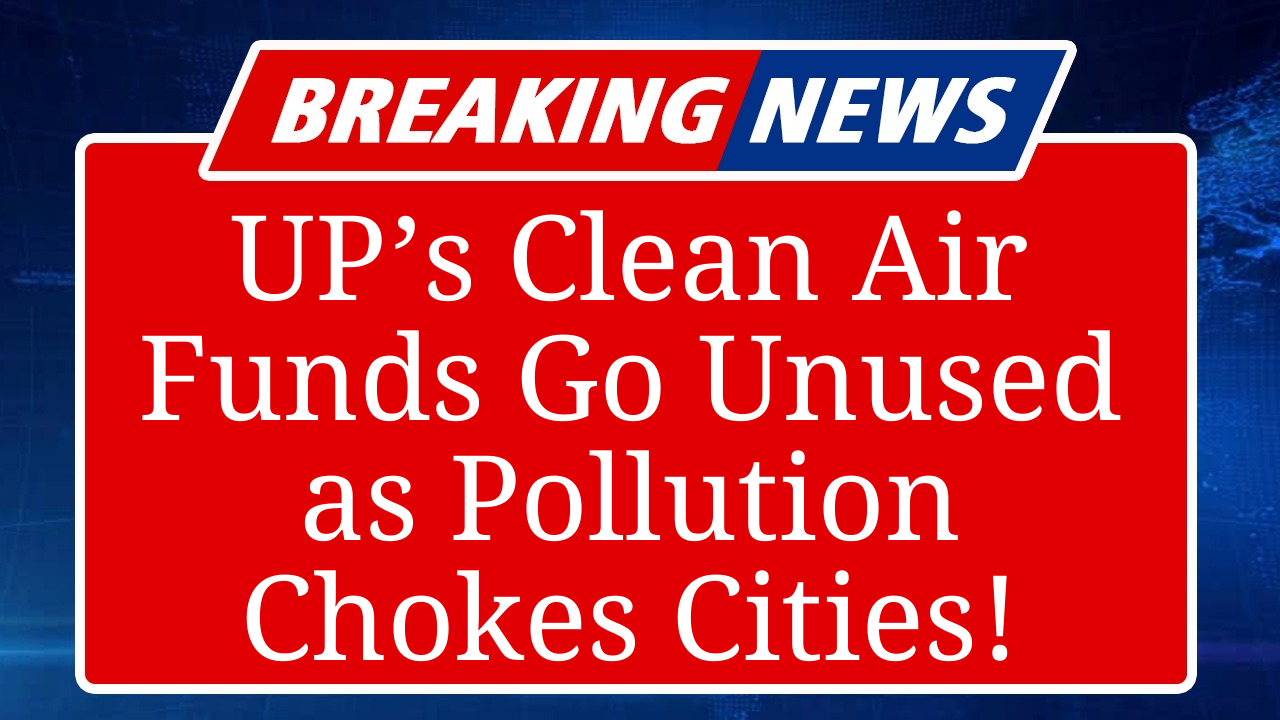“Despite significant allocations under the National Clean Air Programme, Uttar Pradesh has struggled to utilize funds effectively for pollution control. Delays in approvals, inadequate infrastructure, and slow progress in emission reduction efforts hinder the state’s fight against worsening air quality, raising concerns about public health and environmental sustainability.”
UP’s Battle to Curb Pollution with Underutilized Funds
Uttar Pradesh, home to some of India’s most polluted cities like Kanpur, Varanasi, and Lucknow, faces a critical challenge in addressing air pollution. The National Clean Air Programme (NCAP), launched in 2019, aimed to reduce particulate matter (PM) levels by 40% by 2026 compared to 2017 levels. Under this initiative, substantial funds have been allocated to non-attainment cities in UP, which consistently fail to meet national air quality standards. However, recent reports highlight significant underutilization of these funds, raising questions about the state’s commitment to cleaner air.
In 2024-25, the Union Environment Ministry allocated ₹858 crore nationwide for pollution control schemes, with Uttar Pradesh receiving a significant share due to its large number of polluted cities. Maharashtra and UP, by virtue of their size, received close to ₹400 crore each for air quality improvement measures. Yet, a parliamentary panel flagged that less than 1% of these funds had been utilized by March 2025, citing delays in scheme approvals and bureaucratic bottlenecks.
The reasons for this underutilization are multifaceted. In UP, only 37% of cities under NCAP have completed Emission Inventory (EI) and Source Apportionment (SA) studies, critical for identifying pollution sources and designing targeted mitigation strategies. Without these studies, cities like Agra and Ghaziabad lack clarity on whether vehicular emissions, industrial output, or construction dust are the primary culprits. This gap hampers the ability to allocate funds effectively for measures like upgrading public transport, enforcing dust control at construction sites, or curbing stubble burning.
For instance, Kanpur, one of UP’s most polluted cities, struggles with industrial emissions and vehicular pollution. The city’s air quality index (AQI) frequently crosses hazardous levels, with PM2.5 concentrations well above the World Health Organization’s safe limit of 15 µg/m³. In 2024, Kanpur’s annual average PM2.5 was reported at 98 µg/m³, marginally better than Delhi’s 102 µg/m³ but still alarming. Despite funds being available for initiatives like mechanized road sweeping and anti-smog guns, implementation remains sluggish. Only 59 out of 122 non-attainment cities nationwide, including those in UP, have reliable PM2.5 data, further complicating progress tracking.
The state has taken some steps forward. In 2023, UP implemented Stage I of the Graded Response Action Plan (GRAP) in cities like Noida and Ghaziabad, focusing on dust mitigation and waste management. The use of bio-decomposers to curb stubble burning, a major contributor to winter pollution, has been piloted in select districts. However, scaling these initiatives across UP’s vast rural and urban landscape remains a challenge. For example, only 5% of Punjab’s allocated funds for similar measures were utilized, and UP’s track record suggests comparable inefficiencies.
Experts argue that UP’s air quality crisis demands a shift from reactive to preventive measures. Technologies like low-cost air quality monitors and IoT systems, as adopted in countries like South Korea and Singapore, could provide real-time data to guide interventions. Additionally, stricter enforcement of regulations, such as mandating 30% electric vehicle (EV) sales by 2026 in cities like Lucknow, could reduce vehicular emissions, which account for 27% of India’s air pollution.
The economic and health toll of inaction is staggering. Air pollution in India causes 1.4 million premature deaths annually and costs the economy $95 billion in lost productivity. In UP, children miss nearly 10% of school days due to pollution-related health issues. The state’s failure to utilize funds effectively risks exacerbating these losses, undermining both public health and economic resilience.
Streamlining fund allocation, reducing bureaucratic delays, and investing in data-driven solutions are critical for UP to meet its NCAP targets. Without swift action, the state’s cities will continue to choke under a smoggy haze, endangering millions of lives.
Disclaimer: This article is based on reports and data from reputable sources, including The Times of India, Hindustan Times, The Hindu, and The Economic Times, as well as expert analyses. Information reflects the latest available data as of September 2025. Readers are advised to verify real-time updates from official government sources for the most current developments.

